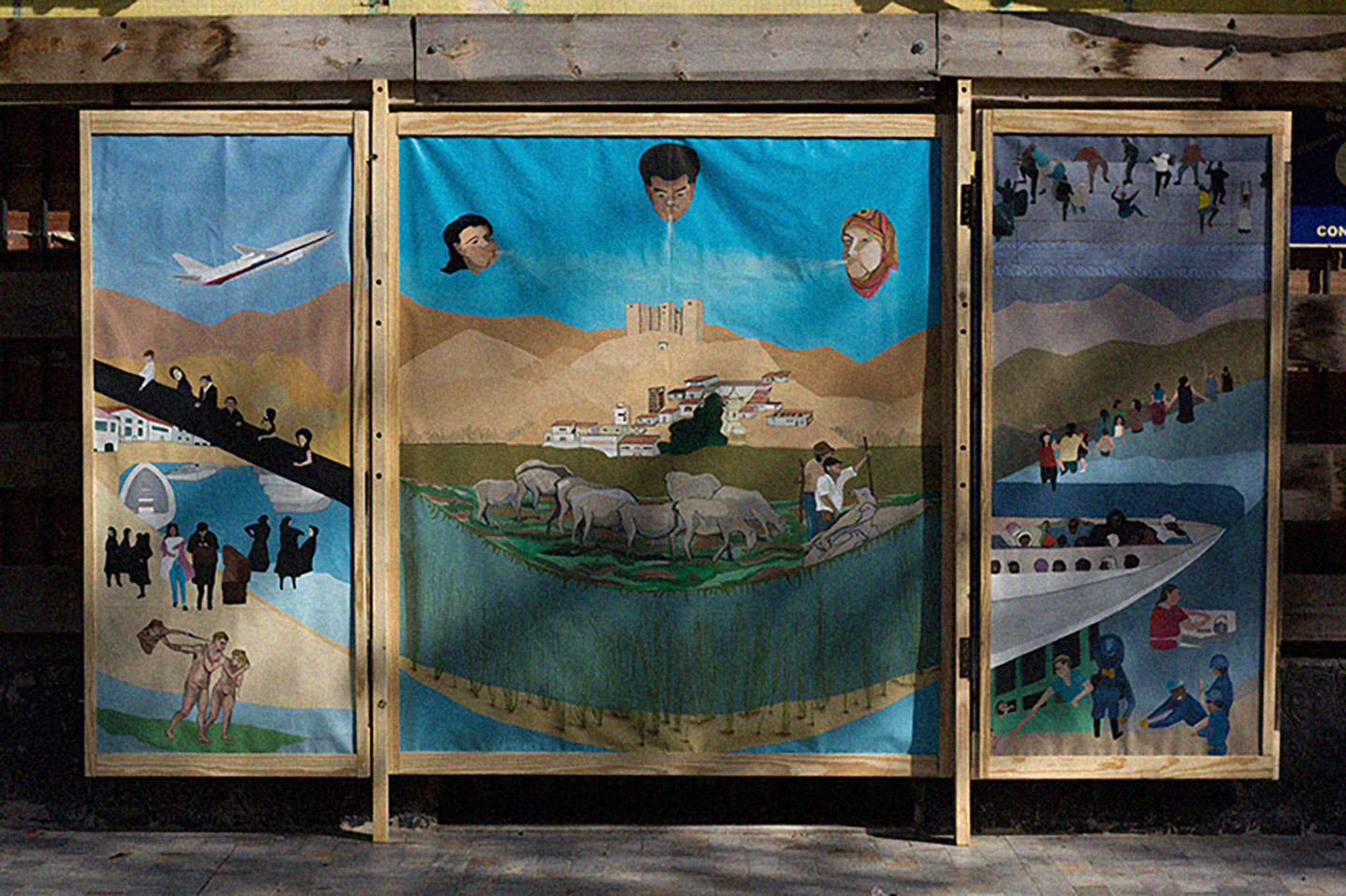
13 Mar Pablo Linsambarth
Residency programme: April 2016 – June 2016
April and May 2016
Painting – Installation
Pablo Linsambarth reflects upon the identity and the migration movements. Linsambarth creates a triptych in which he uses many references from the history of art to represent the migrations, the nomadism and the exodus.
Presents the migration as the decision driven by the hope for a better life, in which often the expectations fale and in which the possibilities to accomplish the wishes are strongly boned to the origin of the people, expressed in differentiation of class and race.
The exodus need to be understood as a forced migration, Pablo uses the expulsion from the paradise of Adam and Eve as an image of an ancestral issue which is been happening once and again along the history.
In the painting of the largest format is represented the nomadism, an old practice in which the movement was free and strongly linked to the earth. This piece is crowned by three stereotypes of the cultures that have composed Blancas population and many other places, in which and arabic, an hispanian and a mestizo blow the winds that have shaped our societies.
The doors represent the borders which are harder to open for ones than for others.
June 2016
Cicatrices.
Videoinstallation
In his third month of residency, Pablo Linsambarth goes from approaching social topics – as the migration- to diving in the intimate world and the personal experience.
Pablo applies for a residency with the idea of leaving behind his own context and concentrate in his artwork, but three months of cohabitation with the people of Blanca makes him feel again part of the context, and realizes that is precisely the living experiences and the affective relationships which bring the content to his artwork.
In this video-installation, the artist talks about the idea of scar: the trace of the event. Furrows that generate deviations of the path, paths that open crevices, falls into the abbiss.
This month he makes ten years that he carries a significant scar in his body, this fact added to the encounter with other young boys, also with marks, make him reflect about the paths we take, the changes in our life and how there are also universal stories in the personal and in the intimate.
There are events which stay, that in one way or another inhabit us forever. When a blade crosses the flesh, what closes first is the surface, the skin hides the hollow; what occurs inside bits under another rhythm, the dermal tissues do what they can, they search for each other to become a unity, then, the scar reminds that something have changed inside, the the unit turned into multiplicity, and one apprehends that each scar is a transformation.











